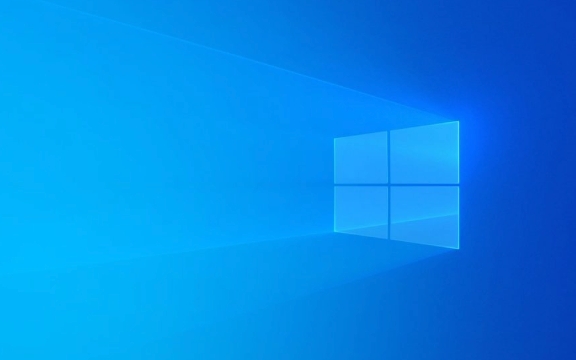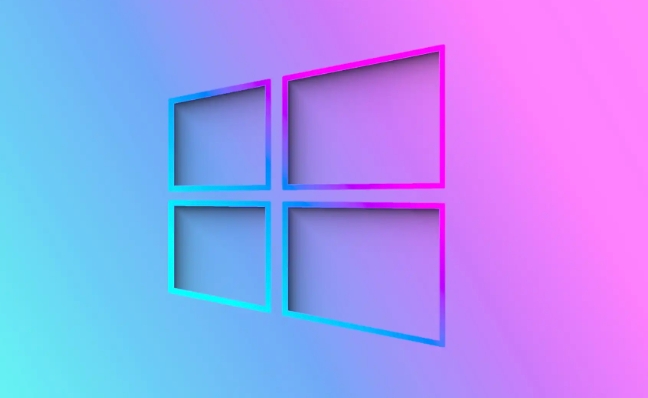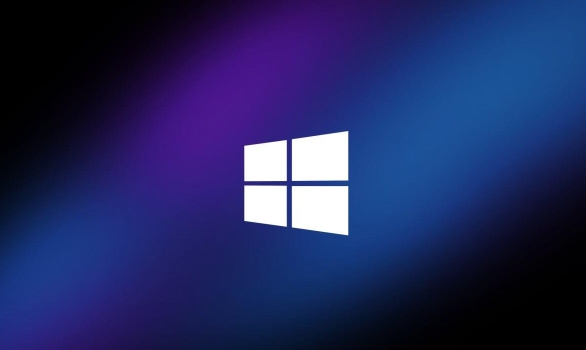How to use the wevtutil command to manage event logs in Windows
The wevtutil command is used to manage Windows event logs via command line. 2. To list all logs, use wevtutil el; to get details about a specific log like System, use wevtutil gl System. 3. Query events with wevtutil qe, such as wevtutil qe System /count:10 /f:text for the last 10 events in text format, and export logs using wevtutil epl System C:\temp\SystemLog.evtx. 4. Clear a log with wevtutil cl Application, but first back it up using wevtutil epl Application C:\backup\Application_Backup.evtx to preserve data. 5. For remote management, use /r:RemotePC with credentials via /u and /p, ensuring WinRM or RPC is enabled and firewall rules allow access. 6. Always run as Administrator for log modifications, use /f:renderedxml for readable XML output, filter output with findstr, and open exported .evtx files in Event Viewer for analysis, making wevtutil a powerful tool for automation, auditing, and troubleshooting of Windows event logs.

The wevtutil command in Windows is a powerful command-line tool for managing event logs—useful for system administrators, IT pros, or anyone troubleshooting system or application events. It lets you query, export, clear, backup, and configure event logs without needing the Event Viewer GUI. Here's how to use it effectively.

1. Understanding wevtutil Basics
wevtutil stands for Windows Event Log Utilities. It works with both built-in logs (like Application, System, Security) and custom logs. You can run it from Command Prompt or PowerShell with appropriate permissions (some operations require Administrator rights).
General syntax:

wevtutil [action] [logname|query] [options]
Common actions include:
el– Enumerate logsgl– Get log informationqe– Query eventsepl– Export logcl– Clear logal– Archive log
2. List and Inspect Event Logs
To see all available logs on the system:

wevtutil el
This outputs a list like:
Application System Security Setup Windows PowerShell
To get detailed info about a specific log (e.g., System):
wevtutil gl System
This shows:
- Log size
- Maximum size
- Retention settings
- Enabled status
- Path to log file
Useful for checking if a log is full or if retention is configured properly.
3. Query and Export Event Logs
To retrieve events from a log, use qe. For example, get the last 10 events from the System log:
wevtutil qe System /count:10 /f:text
Common formatting options:
/f:text– Human-readable text/f:xml– Raw XML (useful for scripting)/f:renderedxml– Includes rendered message text in XML
To export the entire System log to an .evtx file:
wevtutil epl System C:\temp\SystemLog.evtx
⚠️ Make sure the target directory (e.g.,
C:\temp) exists.
You can also filter events using XPath queries. For example, get Error-level events from System:
wevtutil qe System /q:"*[System/Level=2]" /f:text > C:\temp\Errors.txt
- Level 1 = Critical
- Level 2 = Error
- Level 3 = Warning
- Level 4 = Information
4. Clear or Backup Logs
To clear a log (e.g., Application log):
wevtutil cl Application
⚠️ This permanently deletes all events in the log. Use with caution.
To archive and save a log before clearing:
wevtutil epl Application C:\backup\Application_Backup.evtx wevtutil cl Application
This is useful for compliance or debugging.
5. Advanced: Managing Remote Logs
You can use wevtutil on remote machines if you have admin rights and WinRM or RPC enabled.
To query logs on a remote computer:
wevtutil el /r:RemotePC /u:Domain\Admin /p:Password
Or query events remotely:
wevtutil qe System /r:RemotePC /u:Admin /p:Pass123 /f:text
Note: Remote access may be blocked by firewall or group policy. Use
/rwith proper credentials.
6. Common Tips and Gotchas
- Always run Command Prompt as Administrator when modifying logs (especially Security log).
- Use
/f:renderedxmlif you need message text in exported XML—regular/f:xmlmay only include event IDs. - Combine with
findstrto filter text output:wevtutil qe System /f:text | findstr "error"
- Exported
.evtxfiles can be opened in Event Viewer by dragging them into the console.
Basically, wevtutil gives you scriptable, precise control over Windows event logs—whether you're auditing, troubleshooting, or automating log maintenance. It’s not flashy, but once you know a few key commands, it’s faster and more flexible than clicking through the GUI.
The above is the detailed content of How to use the wevtutil command to manage event logs in Windows. For more information, please follow other related articles on the PHP Chinese website!

Hot AI Tools

Undress AI Tool
Undress images for free

Undresser.AI Undress
AI-powered app for creating realistic nude photos

AI Clothes Remover
Online AI tool for removing clothes from photos.

Clothoff.io
AI clothes remover

Video Face Swap
Swap faces in any video effortlessly with our completely free AI face swap tool!

Hot Article

Hot Tools

Notepad++7.3.1
Easy-to-use and free code editor

SublimeText3 Chinese version
Chinese version, very easy to use

Zend Studio 13.0.1
Powerful PHP integrated development environment

Dreamweaver CS6
Visual web development tools

SublimeText3 Mac version
God-level code editing software (SublimeText3)
 How to Change ChatGPT Personality in Settings (Cynic, Robot, Listener, Nerd)
Aug 08, 2025 am 09:33 AM
How to Change ChatGPT Personality in Settings (Cynic, Robot, Listener, Nerd)
Aug 08, 2025 am 09:33 AM
Visit our disclosure page to learn how you can support MSPoweruser in maintaining the editorial team Read moreWant ChatGPT to reflect your mood or communication style? With the launch of ChatGPT 5, OpenAI introduces five distinct personalities – choo
 Best 123Movies Alternatives in 2025 (Free & Legal Streaming Options)
Jul 28, 2025 pm 12:02 PM
Best 123Movies Alternatives in 2025 (Free & Legal Streaming Options)
Jul 28, 2025 pm 12:02 PM
Read our disclosure page to find out how can you help MSPoweruser sustain the editorial team Read more123Movies used to be a go-to destination for free online movie streaming, but it came with serious downsides — from aggressive pop-up ads and potent
 How to change the system display language for all users in Windows
Jul 31, 2025 am 08:18 AM
How to change the system display language for all users in Windows
Jul 31, 2025 am 08:18 AM
InstallthedesiredlanguagepackviaSettings→Time&Language→Language®ion,ensuring"SetasmyWindowsdisplaylanguage"isselected.2.Changethesystemdisplaylanguageinthesamemenuandrestart.3.OpenControlPanel→Region→Administrativetab,click"
 How to manage notifications and actions in Windows
Aug 15, 2025 am 11:31 AM
How to manage notifications and actions in Windows
Aug 15, 2025 am 11:31 AM
You can manage notifications and actions in Windows through settings to stay focused and track important reminders. 1. Open "Settings" (Win I), enter "System>Notifications", and you can turn off notifications globally or manage notification permissions one by one, including banners, sounds and lock screen displays. 2. Select "Off", "Priority Only" or "Alarm Only" mode in "Focus Assist", and customize the priority apps and contacts. You can also set the automatic activation time or turn it on when projecting screens or playing games. 3. Open the Operation Center (Windows10) or Notification Center (Windows11) through the taskbar icon or swipe right, and clear all or individual notifications, and edit common shortcut buttons in "Quick Action". 4. Other prompts include closing notifications
 How to use the wevtutil command to manage event logs in Windows
Jul 30, 2025 am 05:03 AM
How to use the wevtutil command to manage event logs in Windows
Jul 30, 2025 am 05:03 AM
TheweVTUTILCommandisusususususedtowseventlogsviamandline.2.Tolistalllogs, Usewevtutilel; Togetdetailsaboutaficloglik Esystem, Usewevtuttutlglsystem.3.CeryEVENTWITHWEVTUTILQE, Search Aswevtutilqesystem/Count: 10/F: Text Forthelast10 Evest text format,
 How to manage AppLocker policies in Windows
Aug 02, 2025 am 12:13 AM
How to manage AppLocker policies in Windows
Aug 02, 2025 am 12:13 AM
EnableAppLockerviaGroupPolicybyopeninggpedit.msc,navigatingtoApplicationControlPolicies,creatingdefaultrules,andconfiguringruletypes;2.Createcustomrulesusingpublisher,path,orhashconditions,preferringpublisherrulesforsecurityandflexibility;3.Testrules
 How to fix a '0x800f0954' error when installing optional features in Windows
Aug 05, 2025 am 09:30 AM
How to fix a '0x800f0954' error when installing optional features in Windows
Aug 05, 2025 am 09:30 AM
First, run Windows Update troubleshooter to automatically repair common problems, 1. Run Windows Update troubleshooter; 2. Check network connection and proxy settings to ensure that you can access the Windows Update Server; 3. Use DISM command to repair component storage, and specify the local Windows ISO source if necessary; 4. Manually specify the ISO source path when installing optional functions through PowerShell; 5. Reset Windows Update component services and clear cache; 6. Run sfc/scannow and chkdsk to check system and disk errors; finally ensure that the system is updated to the latest and use official ISO first to solve the problem of missing files, and in most cases, you can successfully repair 0x800f0954 errors
 Windows permanently stops system update
Aug 12, 2025 pm 08:24 PM
Windows permanently stops system update
Aug 12, 2025 pm 08:24 PM
Permanently stop Windows system updates: Use the Group Policy Editor: Double-click "Auto Update" settings and select "Disabled". Using the Registry Editor: Set the data value of "NoAutoUpdate" to "1". Advantages: Completely stop future updates and free up storage space. Disadvantages: Increased security risks, loss of functions, and incompatibility problems. Note: Use only after understanding the risks, you will be responsible for the consequences.







